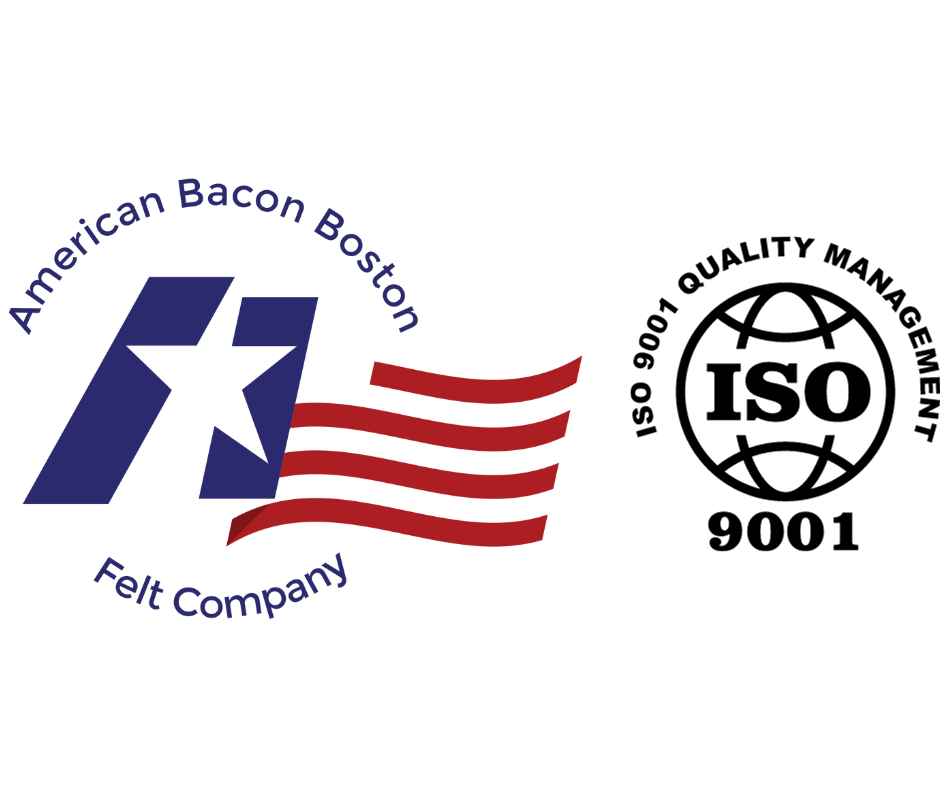Specifications
Type I Roll Felt: F-5 to F-7
Type I Roll Felt: F-10 to F-15
Type I Roll Felt: F-50 to F-55
S.A.E. Felt recommended Applications
SAE F-1
is suitable for oil retention in installations where the felt is not compressed, for feeding low viscosity or light oil, and where unusual strength and hardness are required. Washers, bushings, wicks, door bumpers, polishing blocks and parts where wear and resistance to abrasion are required, are typical uses.
SAE F-2 & F-3
are recommended for vibration mountings and the same general purposes as F-1, but where a felt of slightly lower strength and hardness is satisfactory.
SAE F-5 & F-7
are recommended for dust shields, wipers, grease retainers washers, vibration mountings, and in uses where a resilient felt is required.
SAE F-10, F-11 & F-12
are recommended for grease and oil retention where the felt is confined and compressed in assembly. Also, recommended for dust shields under less severe operating conditions where F-5, F-6 and F-7 are not required.
SAE F-13 & F-15
are recommended for sound deadening, chasis strips, spacers, dust shields, and for mechanical purposes where abrasion and wear are not important factors.
SAE F-50
is recommended for ball and roller bearing oil retainer washers and small dust-excluding washers. Also for mechanical purposes where an accurate, thin, smooth high-grade felt is required.
SAE F-51
is recommended for the same general uses as F-50, but in installations where tolerances and length of life are not as important. Also for thinly cut parts, such as gaskets and liners.
Type II Sheet Felt: 12-S1 to 12-S4
Type II Sheet Felt: 16-S1 to 16-S4
Type II Sheet Felt: 20-S1 to 20-S4
Type II Sheet Felt: 26-S1 to 26-S4
Type II Sheet Felt: 32-S1 to 32-S4
Lengths Types 1 & 2
Types 1
Each roll shall contain not more than two pieces, neither of which shall be less than 3 yards in length. When specified, 3/4 to 2 inch-thick felt may be put up in sheets ³ 72 by 36 inches.
Type II
Felt shall be furnished in sheets 36 inches by 36 inches ± 1/2 inch.
Certifications
Certificates of compliance from AFFCO's complete in-house physical and chemical laboratory accompany Types I and II.
Capabilities
AFFCO manufacturers a complete line of engineered felts:
• Wool
• Synthetics
• Blends and Composites
• Needled and Pressed
Mechanical Felt Applications
Cushioning & Padding
Felt's tough, interlocking fibers provide excellent resilient protection against intermittent or sustained impact. Resiliency is controlled by selected combinations of densities and fibers. Some uses: orthopedic pads, bumpers, athletic equipment, industrial cushioning.
Gasketing & Sealing
Select combinations of physical properties, liquid absorption, low coefficient of friction, and resiliency position felt for many special applications requiring gaskets and seals. Airtight, water-tight, dust-tight seals, plain, treated, or laminated often serve as lubricating media as well. Impregnations and laminations open felt media to the wide spread applications.
Capabilities
AFFCO manufacturers a complete line of engineered felts:
• Wool
• Synthetics
• Blends and Composites
• Needled and Pressed
Vibration & Shock Control
Felt is a shock absorbing material. It has high resiliency, low compression set, and long life characteristics. Felt reduces large scale vibration and shock transmission by up to 85%.
Polishing
AFFCO's felt making process controls the texture and firmness of the felt in order to produce the desired degrees of abrasiveness for polishing the roughness and irregularities from a wide range of materials. In addition, felt has absorbent properties to hold rouge, waxes, and other polishing liquids.
Type I & II Felt Construction
Type I & II felts are industrial fabrics with high a percentage of wool fibers which are interlocked by applying combinations of mechanical pressure, chemical treatment, moisture, and heat. The wool felt making process depends on the natural tendency of wet wool fibers to tightly interlock. The process results in pressed wool felt, where the higher the percentage of wool the more dense and stronger the felt is. On the other hand, the higher the percentage of "filler" fibers (often rayon) make the felts less dense and more porous. Many end uses demand the densities and porosities of pressed felt.
For more inquries:
NEW YORK
361 Walsh Avenue, New Windsor, New York 12553 USA
e: questions@affco.com
p: (845) 561-3560
NEW HAMPSHIRE
31 Front Street, E. Rochester, NH 03868
e: felt@baconfelt.com
p: (603) 332-7000

